SI Vault: Remembering Pele Throughout the Years

As a 17-year-old in 1958, Edson Arantes do Nascimento clinched what would be the first of three World Cup titles. Fast forward 65 years, and the man known as Pelé was still a household name, synonymous with excellence.
The Brazilian legend died Thursday after a monthlong stay in the hospital for complications from cancer, and the impact of his legacy led to tributes from around the world.
Pelé was—and still is—an iconic figure in the history of the sport, known as much for his World Cup triumphs and goals records as for spreading the game around the world—He finished his career with a stint with the New York Cosmos.
From Pete Axthelm’s 1966 feature of his prolific career and rise to stardom to S.L. Price’s 2014 account of his ongoing celebrity, Sports Illustrated chronicled the life and career of the Brazilian star—many of which you can find below.
The Samba No One Could Match
In the summer of 1958, John Mulliken relayed the events of Brazil’s first World Cup triumph over Sweden. Pelé scored two goals in the 5–2 thrashing of the Swedes, including what is still considered one of the best World Cup goals ever.
But at the time, the 17-year-old was just a prodigy, just enough to make the end of the report. Yet one quote from an American referee turned into prophecy.
“If there was a star among stars, it was Pelé (Evaldo Alves Santarosa),” Mulliken wrote. “Of this 17-year-old soccer genius, Johnny Best (the only American who is a fully qualified international soccer referee) said: ‘The great player of the last few years was England’s Stanley Matthews, but this boy may be even greater. He is the great potential player in football today.’” (Read more)
Thus, the legend of Pelé began.
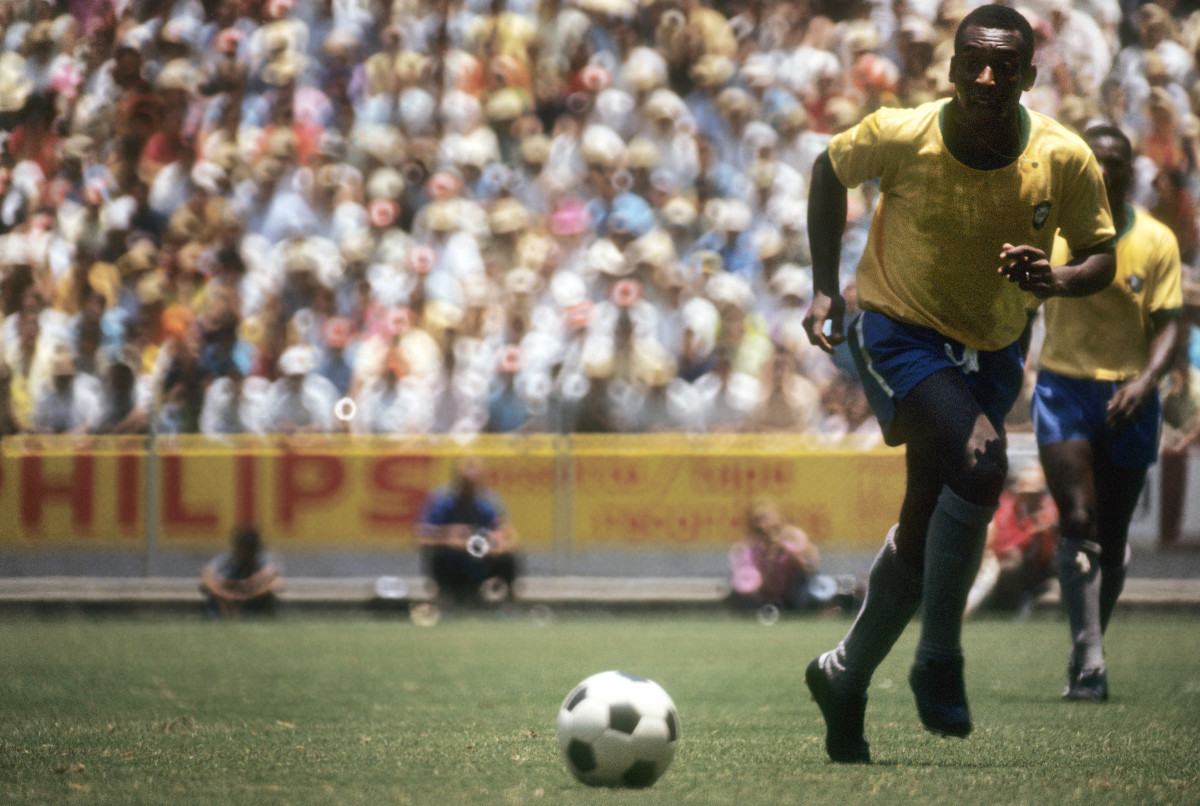
Viva Vava and Garrincha!
In Chile in 1962, Brazil won its second straight World Cup, playing most of the tournament without Pelé. The star, then 22 years old, only featured in the first two matches before he was injured against Czechoslovakia, whose “strategy was simple: render Pelé horizontal as soon as possible and get on with the match.”
Roy Terrell captured how the Seleção carried on anyway and won the tournament without the on-field support of the star, backed by four goals each from Garrincha and Vavá. Yet Pelé’s presence hung over the tournament—and even drew a hilarious Willie Mays reference that seemed to puzzle the Brazilian manager.
“’Yes, Garrincha is a wonderful player,’ said the Brazilian coach, Aymore Moreira, after the game, ‘but we still miss Pelé. No one else is like him in the world. Garrincha plays only three notes, do, re, mi. He plays them well but Pelé plays the whole scale, do, re, mi, fa, sol, la, ti, do. And he plays each note better than anyone else.’
‘Pelé sounds like Willie Mays,’ suggested a visitor.
‘Willie who?’ said Moreira.”
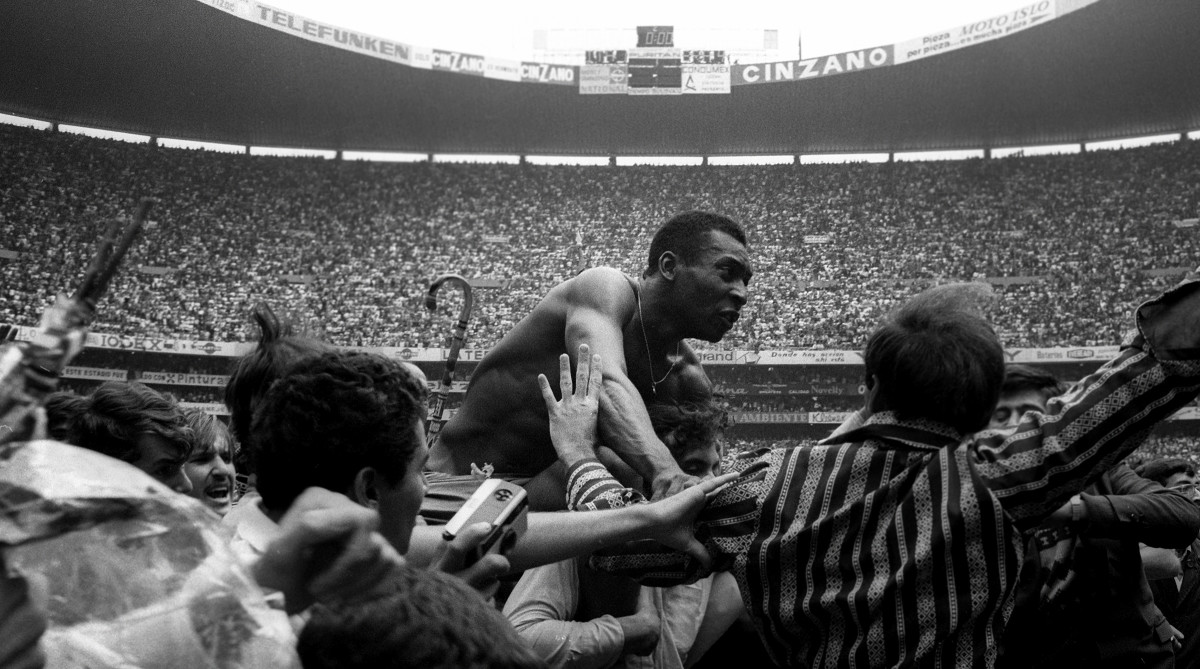
The Most Famous Athlete in the World
Fresh off his first World Cup disappointment in 1966, Pelé was profiled in a full-length feature by Pete Axthelm.
The story covers Pelé’s origins as a cobbler’s apprentice, the star’s quiet wedding, his philanthropic endeavors and his journey from soccer errand boy to worldwide celebrity (while expressing shock at him earning half-a-million dollars playing soccer).
But one thing appears to have stuck throughout the legend’s life: a thrill for meeting his fans—no matter how rowdy they may be.
“The Sunday Times of London as ‘the sad millionaire…an introverted, remote figure imprisoned in the shell that protects him from the crushing weight of his fame. Actually, Pelé claims, he has rarely been sad, is not a millionaire and will never be crushed or imprisoned by a game he loves or the people who love him.
‘I appreciate the crowds around me,’ he said. ‘Especially the kids. I know that when I was growing up football was one of the few things I could enjoy. …Now I get a thrill myself by having the kids around me.” (Read More)
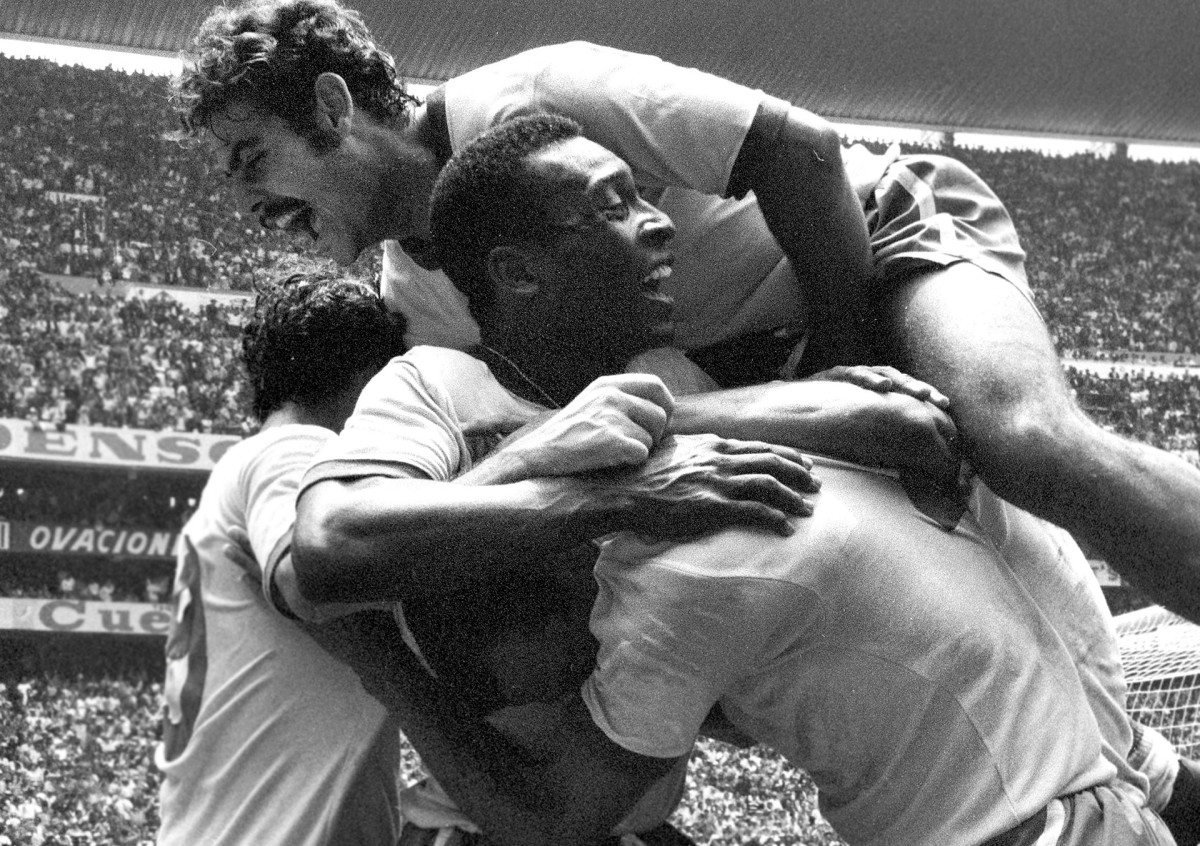
Pelé and Pals Retire the Cup
Pelé’s final World Cup ended in his third triumph in front of 112,504 fans at Mexico City’s Estadio Azteca. In 1970. Brazil was a team that played “with the fluid rhythm of a conga dancer and the daring of a bullfighter,” as Tex Maule put it.
The nation was also so confident that, before the tournament began, the Brazilian embassy in Mexico removed a religious statue from a case and replaced it with a card that read: “After June 21st, the Jules Rimet Cup will occupy this space.” Pelé and his star teammates were carried off the field after the final win, and eventually granted an audience with the president.
“Eventually the Cup will go to Brazil to stay, because this is the third time Brazil has won the championship. The team itself flew home to have lunch with the president of the country the day after the final triumph. The president should feel honored.”
(Read More)
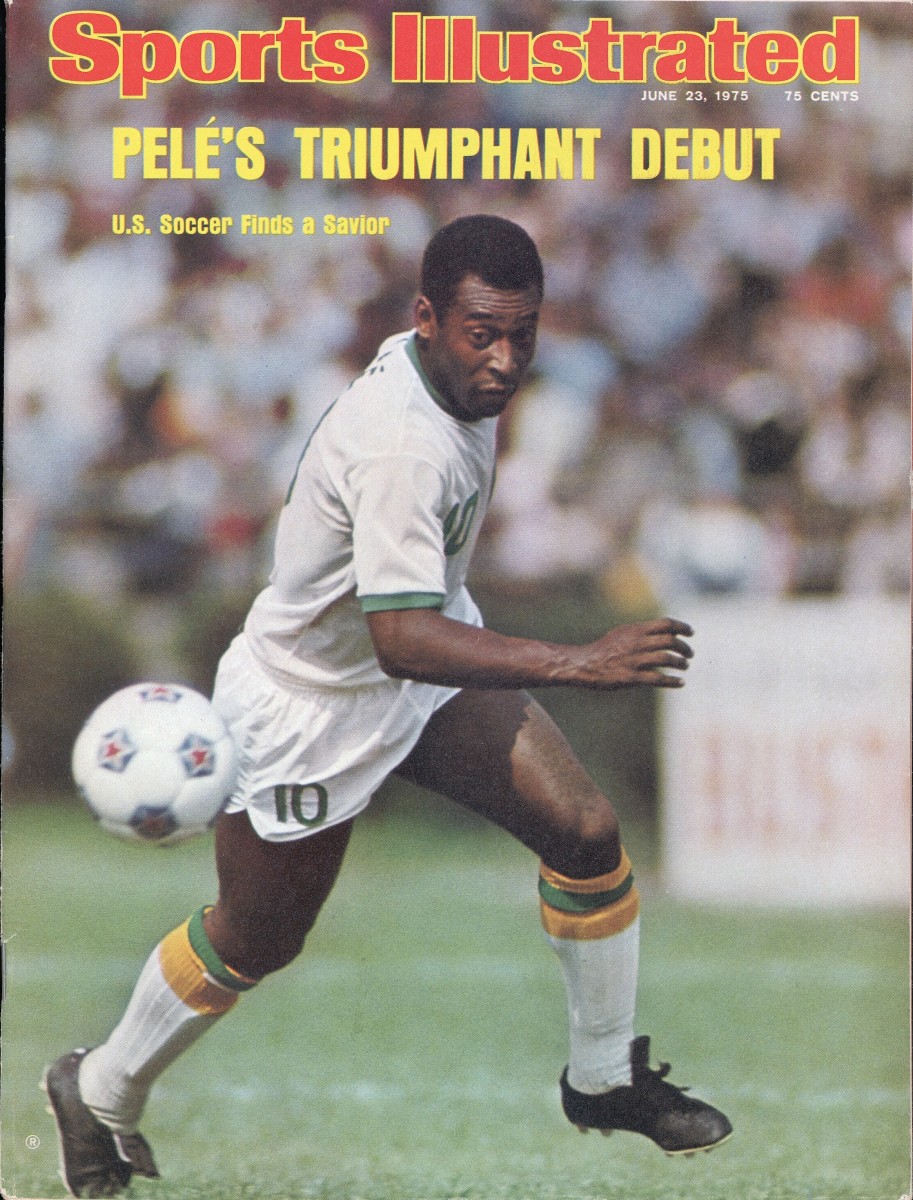
Curtain Call for a Legend
Three World Cups and countless records later, Pelé brought his stardom to the Big Apple. Jerry Kirshenbaum was on hand at Downing Stadium for Pelé’s debut with the New York Cosmos in June of 1975, which became only the second soccer cover in Sports Illustrated history.
“He has been received at Buckingham Palace, given a parade down the Champs-Élysées and hailed everywhere as The King or The Great One,” Kirshenbaum wrote. “ … And now he was going to play on Randalls Island, of all places.”
Five days prior, Pelé had arrived to plenty of fanfare in New York City, fresh off an eight-month retirement. Yet the soccer celebrity loved the relative anonymity of the U.S. and the relished the chance to grow the game there.
“All the talk about big money and promoting soccer has obscured another reason for Pelé’s joining the Cosmos, one that dawned on him as he and Rosie strolled, a couple of years ago, along Los Angeles’ Hollywood Boulevard. Suddenly he realized that he was not being mobbed, and that the U.S. was one of the few places in the world this could happen. He lifted his astonished wife into the air and shouted, ‘I’m free! I’m free!’” (Read more)
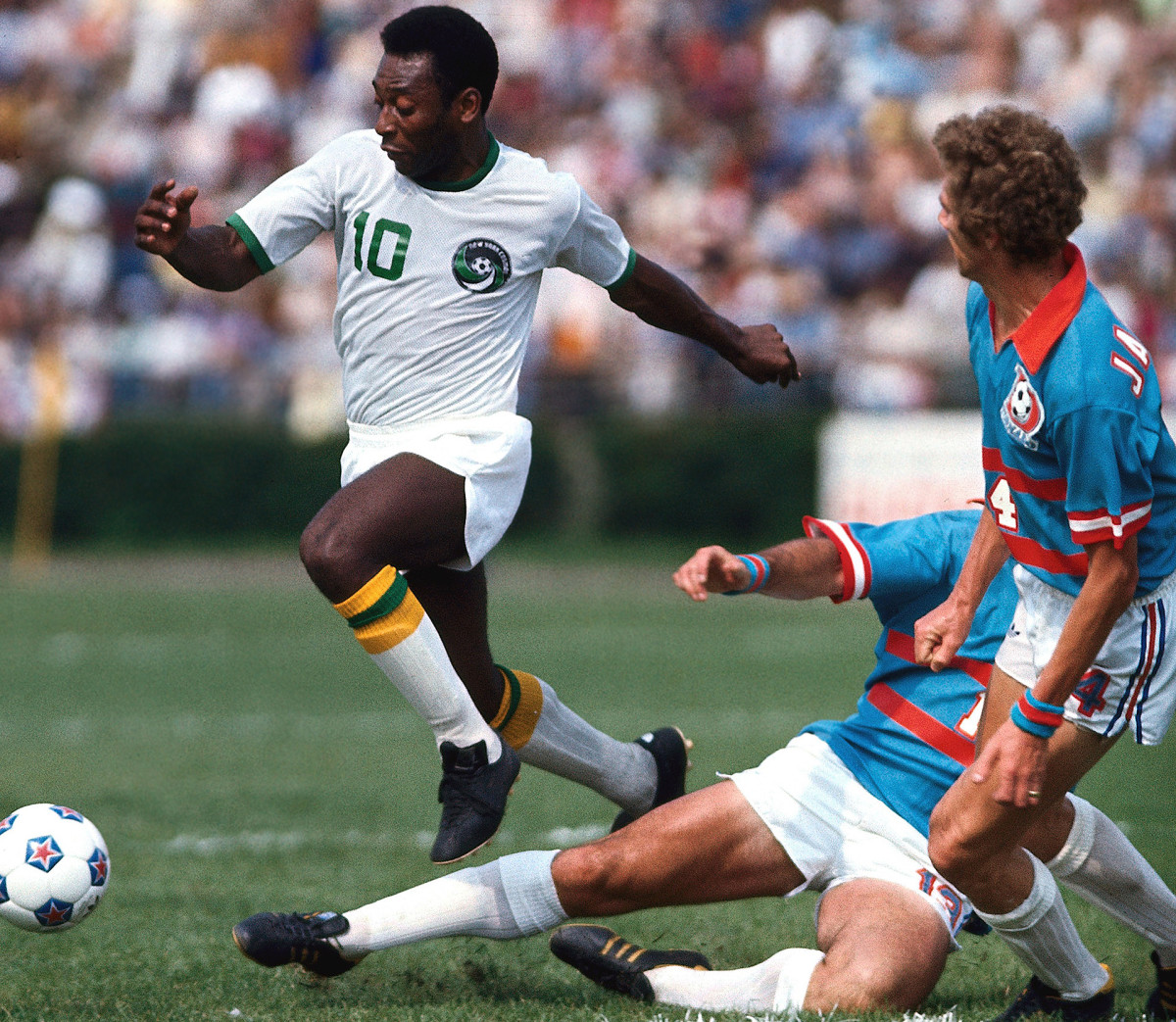
Everybody Wants a Piece of Pelé
Ahead of the 2014 World Cup in Brazil, S.L. Price chronicled the final act of Pelé’s career as the global ambassador of an entire sport. The riches from Pelé’s playing career came nowhere near soccer’s modern stars, who were earning millions on and off the field. So now, it was his time to recoup.
“Soccer phenomenon, actor, singer, sports ambassador, twice-failed businessman, futebol reformer: Pelé has been many things in his life. His last act, though, is about getting paid.”
The legend raked in more than $70 million in endorsements, but one particular anecdote of him filming a Subway ad in New York will leave a smile on your face. Said Pelé: “Subway I could get used to these colors!” (Read more)
